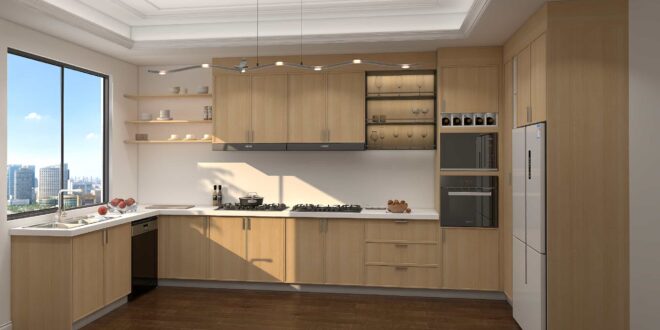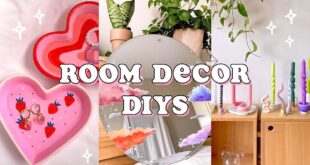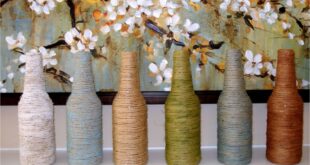Wood Veneer Kitchen Cabinets: A Timeless Choice for Modern Homes
Choosing the right kitchen cabinets is a big decision. They’re not just storage; they define the style and functionality of one of the most important rooms in your home. And with so many options available, from solid wood to laminates, figuring out what’s best for your needs and budget can feel overwhelming. That’s where wood veneer kitchen cabinets come in – offering a beautiful blend of aesthetics, durability, and affordability.
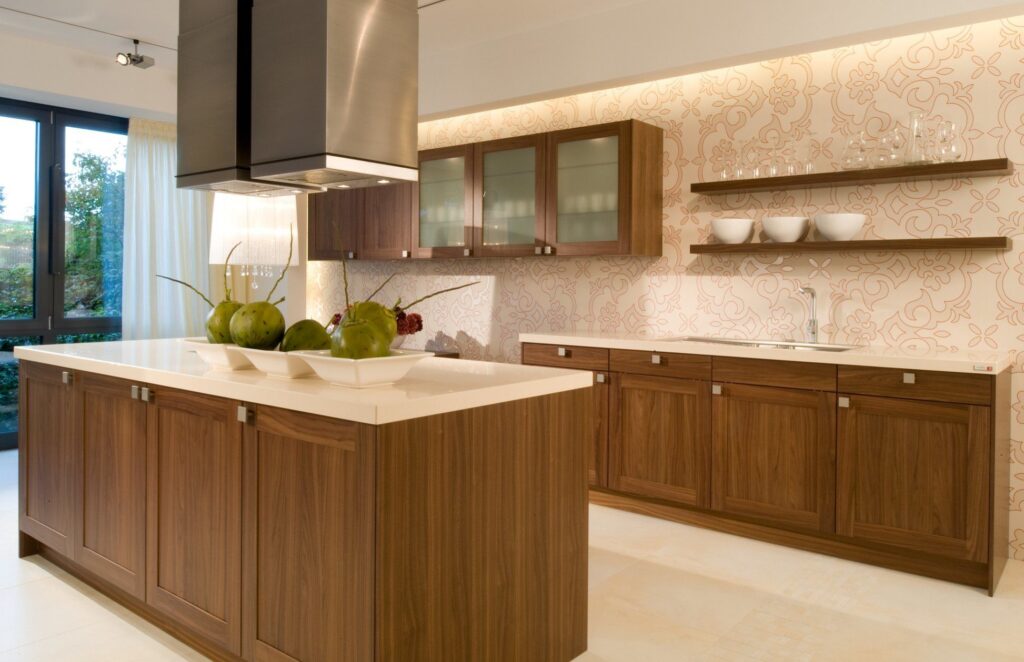
This comprehensive guide dives deep into the world of wood veneer kitchen cabinets. We’ll explore what they are, their pros and cons, how they compare to other cabinet materials, design considerations, installation tips, maintenance advice, and everything else you need to make an informed decision. Think of it as your one-stop resource for all things wood veneer in the kitchen!
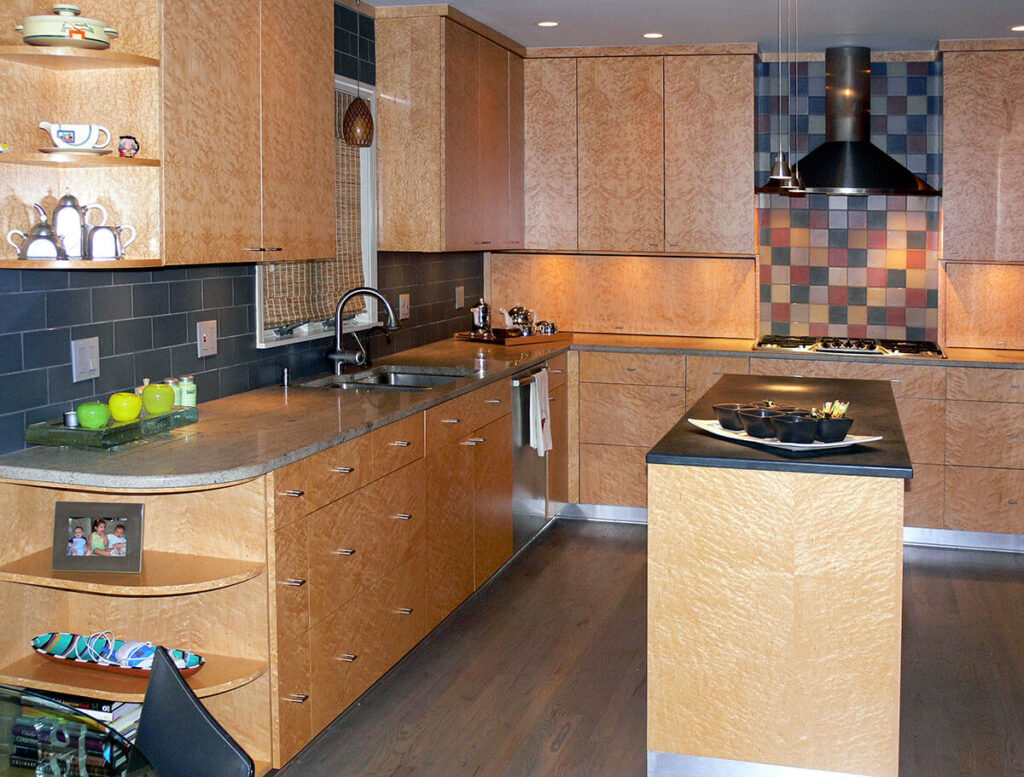
What Exactly Are Wood Veneer Kitchen Cabinets?
Let’s break down what makes wood veneer cabinets unique. The key is understanding the ‘veneer’ part.
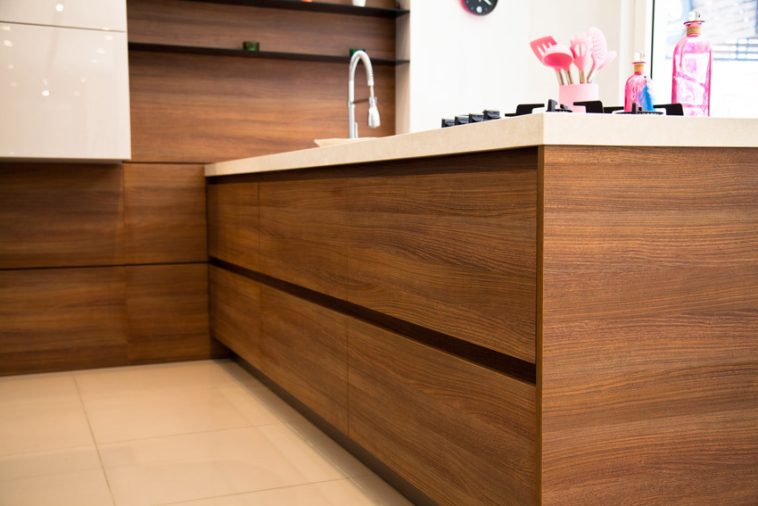
The Veneer Explained: Wood veneer is a thin slice of real wood, typically less than 3mm thick, that’s adhered to a core material. This core is usually plywood, particleboard, or MDF (Medium-Density Fiberboard). The veneer itself is made by slicing a log into thin sheets using specialized equipment, preserving the natural grain patterns and beauty of the wood.
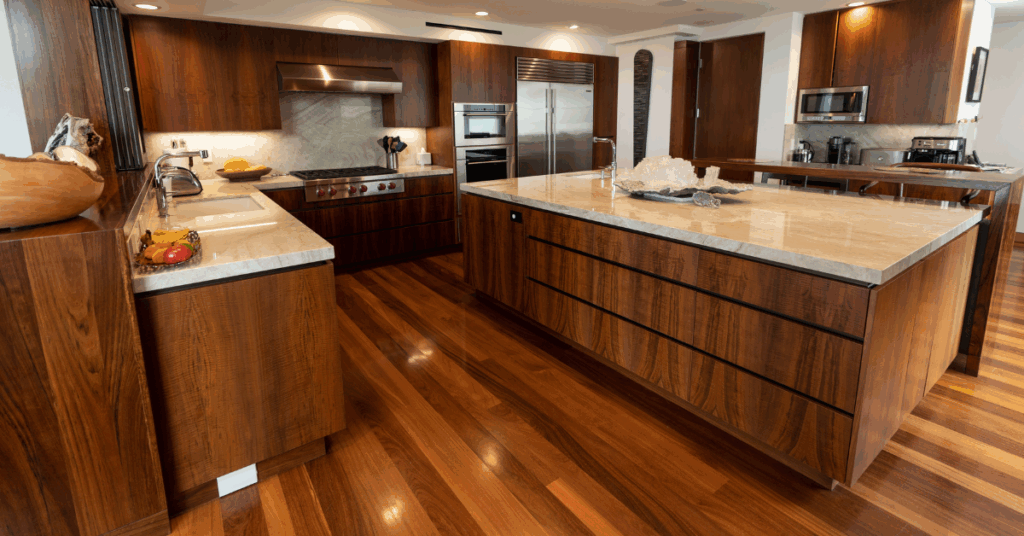
The Construction: So, a wood veneer kitchen cabinet isn’t made entirely of solid wood. Instead, it’s a composite product. The core provides the structural strength and stability, while the wood veneer provides the visual appeal. Think of it like a gorgeous skin over a solid frame. This construction method is often more cost-effective and environmentally friendly than using solid wood for the entire cabinet.
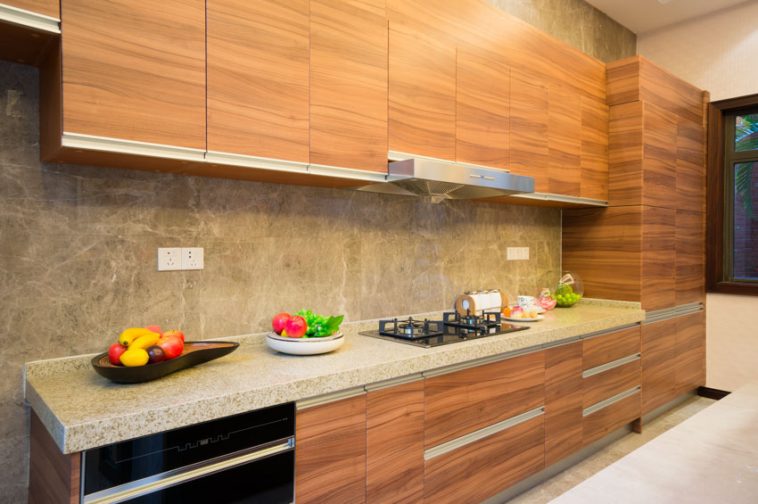
Why Choose Wood Veneer Over Solid Wood?
Good question! While solid wood cabinets are often seen as the gold standard, they come with their own set of challenges. Here’s why wood veneer might be a better option for many homeowners:
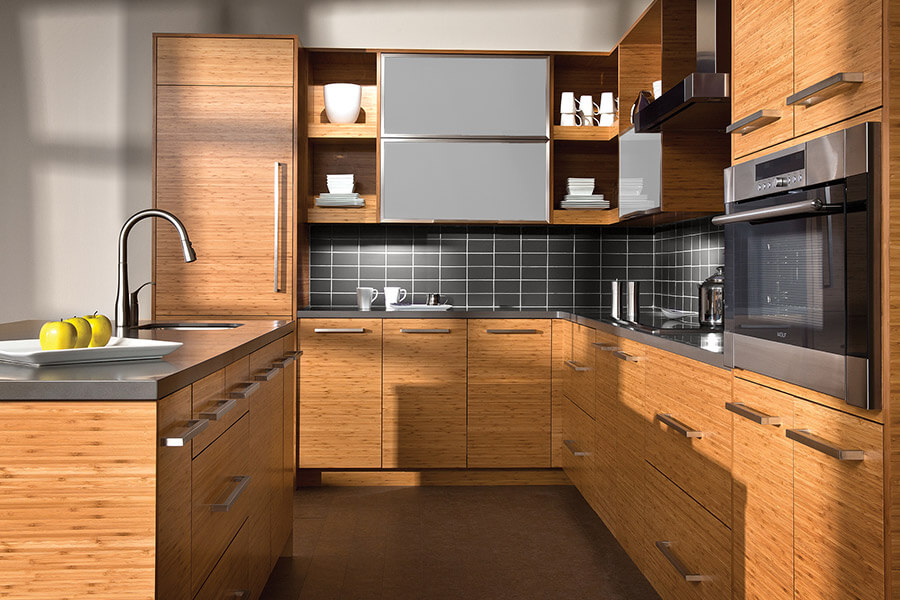
- Cost-Effectiveness: Solid wood cabinets are significantly more expensive than wood veneer. The price difference can be substantial, especially for a full kitchen renovation. Veneer offers the look of real wood at a fraction of the cost.
- Stability: Solid wood is susceptible to warping, cracking, and expansion/contraction due to changes in humidity and temperature. Wood veneer, when properly applied to a stable core, is much less prone to these issues. The core material provides dimensional stability that solid wood often lacks.
- Consistency: Solid wood can vary widely in color and grain pattern, even within the same species. This can make it difficult to achieve a consistent look throughout your kitchen. Veneer allows for a more uniform appearance, as the veneer sheets are carefully selected to match each other.
- Environmental Considerations: Using wood veneer allows for more efficient use of wood resources. A single log can produce many veneer sheets, reducing the demand for solid wood and helping to preserve forests.
The Pros and Cons of Wood Veneer Kitchen Cabinets
Like any material, wood veneer has its advantages and disadvantages. Let’s take a balanced look at both sides of the coin:
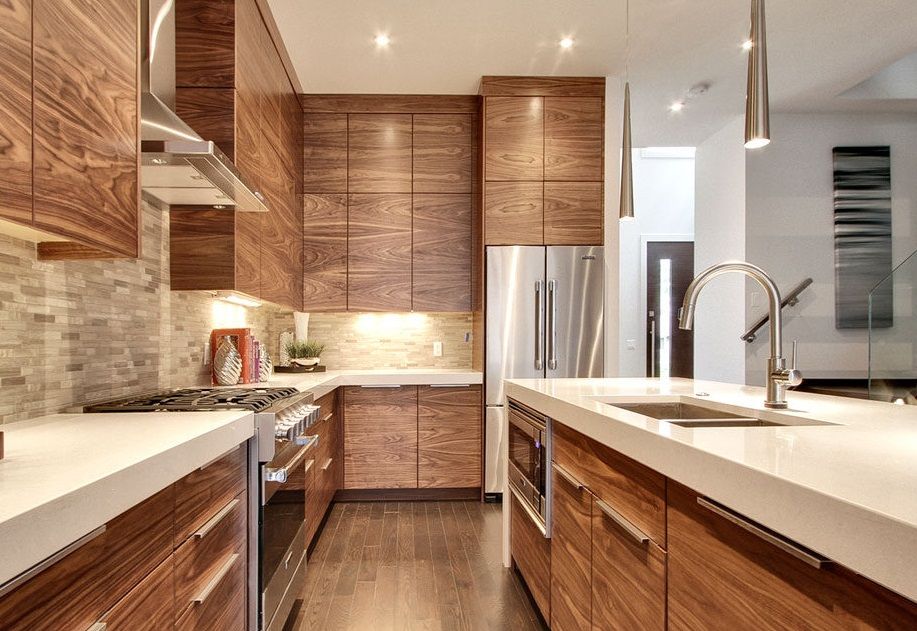
Pros:
- Aesthetic Appeal: Wood veneer offers the natural beauty and warmth of real wood grain. You can choose from a wide variety of wood species, each with its unique color and pattern.
- Cost-Effective: As mentioned earlier, wood veneer is significantly more affordable than solid wood.
- Stability: Veneer cabinets are less prone to warping, cracking, and expansion/contraction than solid wood cabinets.
- Consistency: Veneer provides a more uniform appearance compared to the natural variations in solid wood.
- Environmental Friendliness: Veneer uses wood resources more efficiently.
- Variety: Veneer can be applied to different core materials, allowing for design flexibility and different price points.
- Design Versatility: Wood veneer can be used in a variety of kitchen styles, from traditional to modern.
- Repairable: Minor scratches and dents in the veneer can often be repaired with wood fillers and touch-up stains.
Cons:
- Susceptibility to Moisture: While more stable than solid wood, veneer can still be damaged by prolonged exposure to moisture. Proper sealing and ventilation are crucial.
- Edge Banding Concerns: The edges of veneer cabinets are typically covered with edge banding to protect the core material. If the edge banding is not properly applied or maintained, it can peel or chip.
- Limited Refinishing Options: Veneer is too thin to be sanded down and refinished multiple times like solid wood. You may be able to lightly sand and re-stain, but heavy refinishing is not recommended.
- Potential for Delamination: If the adhesive used to bond the veneer to the core fails, the veneer can delaminate (separate) from the core. This is more likely to occur in areas with high humidity or temperature fluctuations.
- Core Material Quality: The quality of the core material significantly impacts the overall durability and performance of the cabinet. Opt for high-quality plywood or MDF cores for best results.
- Perception: Some people perceive veneer as being inferior to solid wood, even though it can offer significant advantages in terms of cost, stability, and environmental impact.
Wood Veneer vs. Other Cabinet Materials: A Comparison
Let’s see how wood veneer stacks up against other popular kitchen cabinet materials:
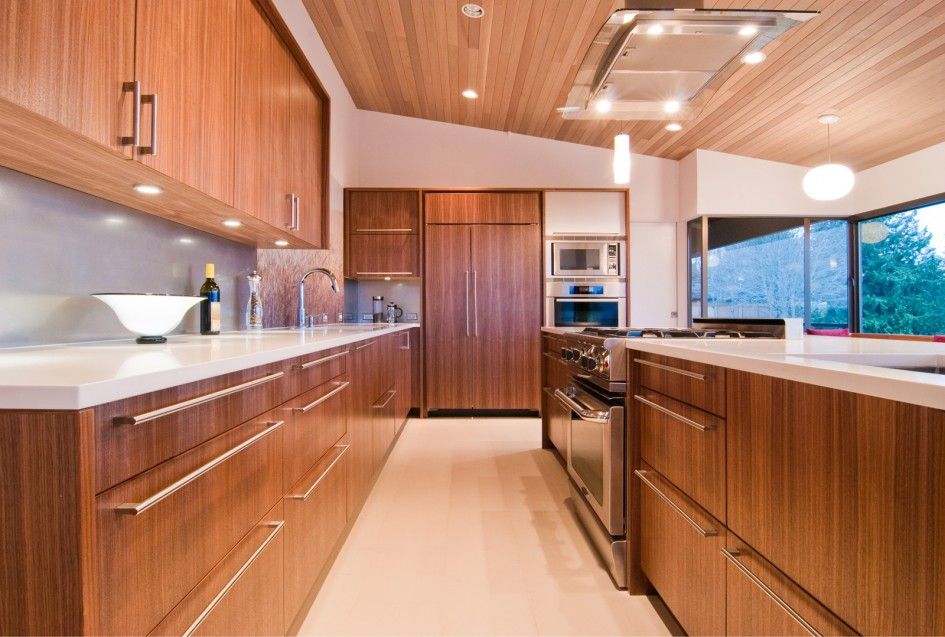
Wood Veneer vs. Solid Wood:
We’ve already touched on this, but let’s reiterate the key differences. Solid wood offers a premium look and the ability to be refinished multiple times. However, it’s more expensive, less stable, and can be less environmentally friendly. Wood veneer provides a similar aesthetic at a lower cost, with better stability and more efficient wood utilization.
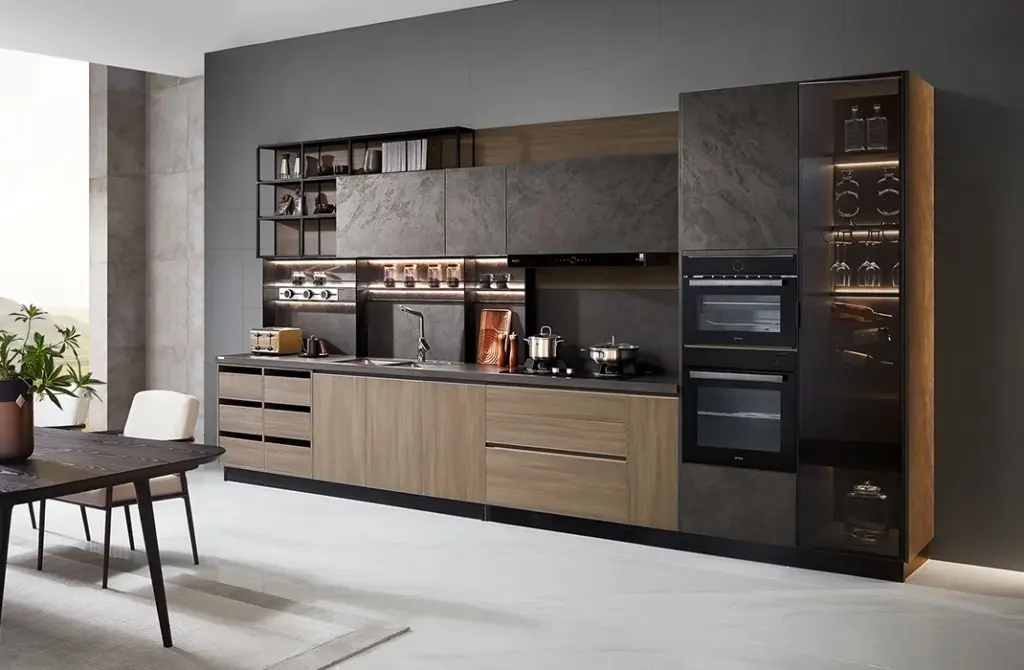
Wood Veneer vs. Laminate:
Laminate is a synthetic material made by bonding layers of paper and resin together. It’s very durable, easy to clean, and available in a wide range of colors and patterns, including wood-grain looks. However, laminate lacks the natural warmth and texture of real wood. It can also look less realistic than wood veneer, especially in lower-quality laminates. Wood veneer offers a more authentic wood appearance, but it requires more care and is more susceptible to moisture damage than laminate.
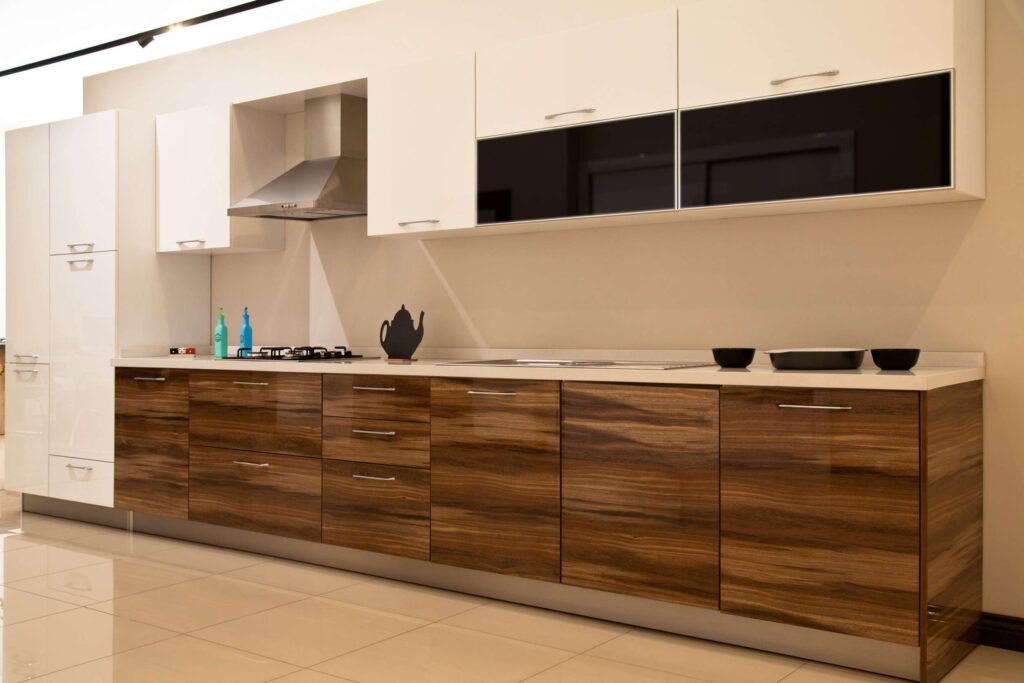
Wood Veneer vs. Thermofoil:
Thermofoil is a thin layer of vinyl that’s heat-bonded to a core material, typically MDF. It’s seamless, easy to clean, and resistant to chipping. However, thermofoil can be susceptible to heat damage and peeling, especially near ovens and dishwashers. It also doesn’t offer the natural wood grain and texture of wood veneer. Wood veneer provides a more upscale look, but it’s more expensive and requires more maintenance than thermofoil.
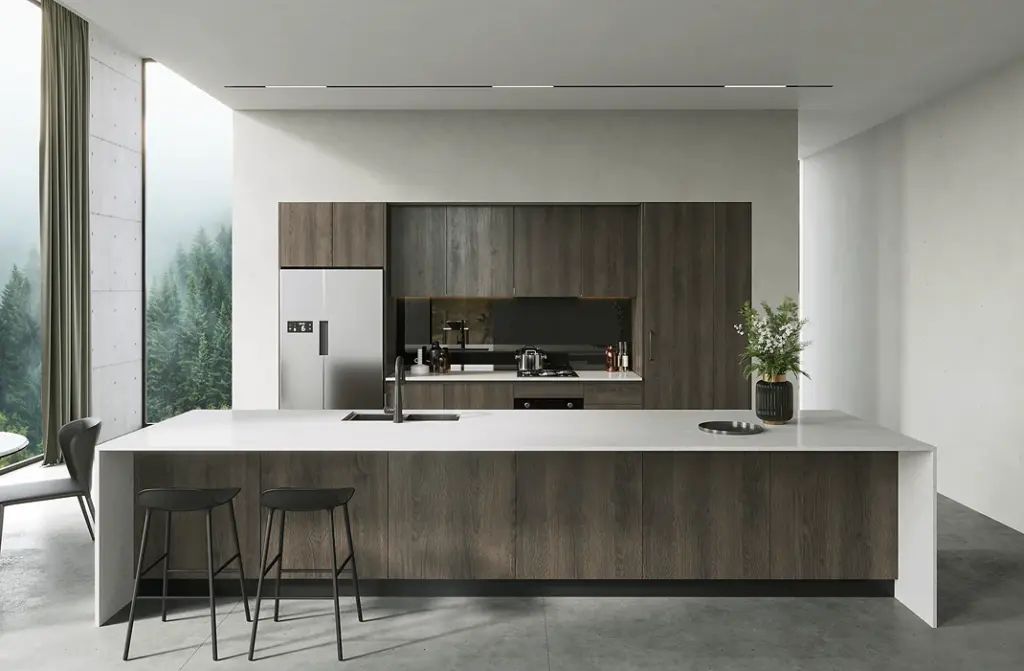
Wood Veneer vs. Metal:
Metal cabinets are known for their durability, modern aesthetic, and resistance to water and pests. However, they can be cold and industrial-looking, and they don’t offer the warmth and natural beauty of wood. Wood veneer can be used to add a touch of warmth and elegance to a kitchen, while metal provides a sleek and durable framework. These two materials are often used together in contemporary kitchen designs.
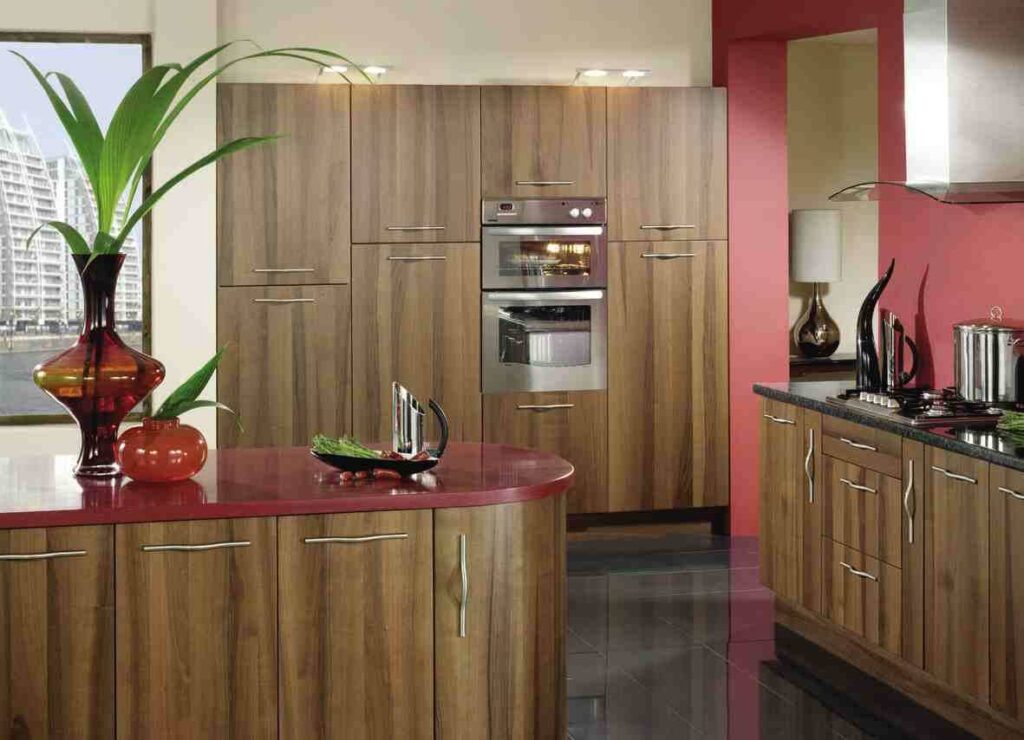
Choosing the Right Wood Veneer for Your Kitchen Cabinets
Not all wood veneers are created equal. Here are some factors to consider when selecting the right veneer for your kitchen cabinets:
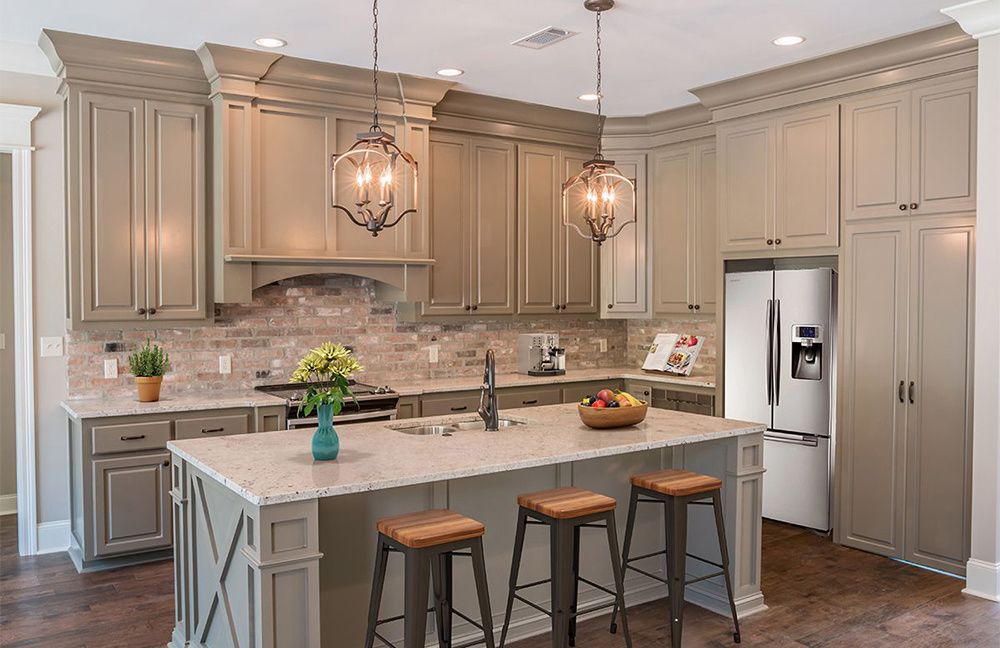
Wood Species:
The wood species determines the color, grain pattern, and overall aesthetic of the veneer. Popular choices include:
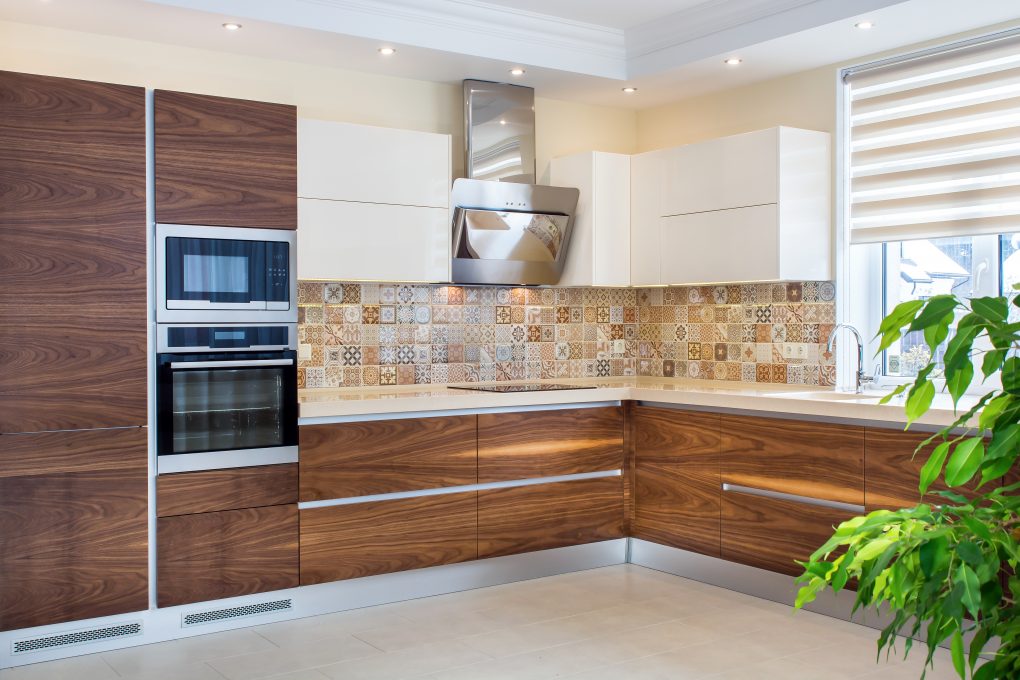
- Oak: A classic choice with a prominent grain pattern and warm color. Available in red oak and white oak varieties.
- Maple: A light-colored wood with a fine, uniform grain. Offers a clean and modern look.
- Cherry: A rich, reddish-brown wood with a smooth, even grain. Adds a touch of elegance and sophistication.
- Walnut: A dark, chocolate-brown wood with a distinctive grain pattern. Creates a warm and inviting atmosphere.
- Birch: A light-colored wood with a tight, even grain. Offers a neutral backdrop for other design elements.
- Mahogany: A reddish-brown wood with a fine, even grain. Known for its durability and luxurious appearance.
Veneer Cut:
The way the veneer is cut from the log affects the grain pattern. Common cuts include:
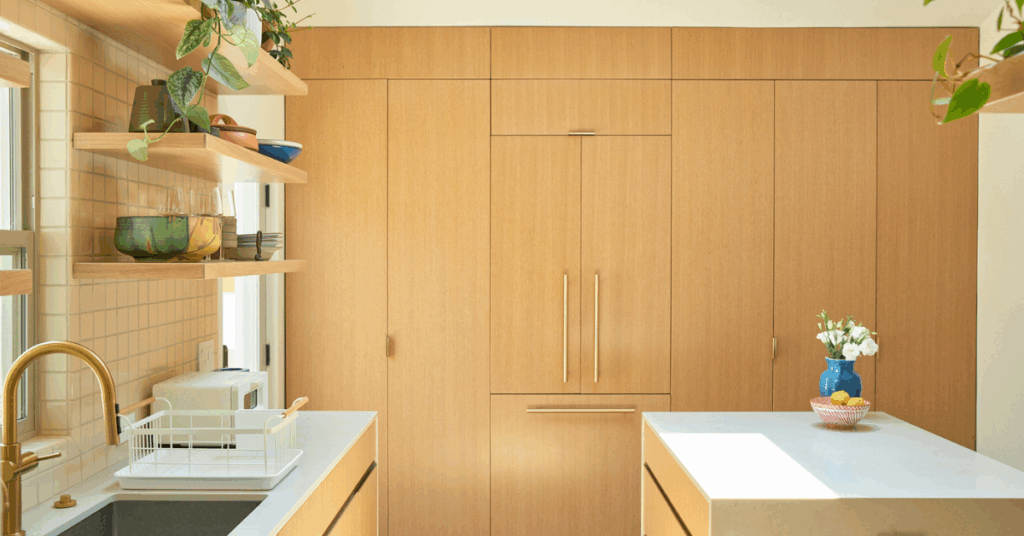
- Plain Sliced: The most common cut, producing a cathedral grain pattern.
- Quarter Sliced: Produces a straight, vertical grain pattern.
- Rift Cut: Produces a tight, linear grain pattern, similar to quarter sliced but with less figuring.
- Rotary Cut: Produces a wild, swirling grain pattern. Typically used for more rustic or contemporary designs.
Veneer Matching:
Veneer matching refers to how the veneer sheets are arranged on the cabinet doors and panels. Different matching methods can create different visual effects:
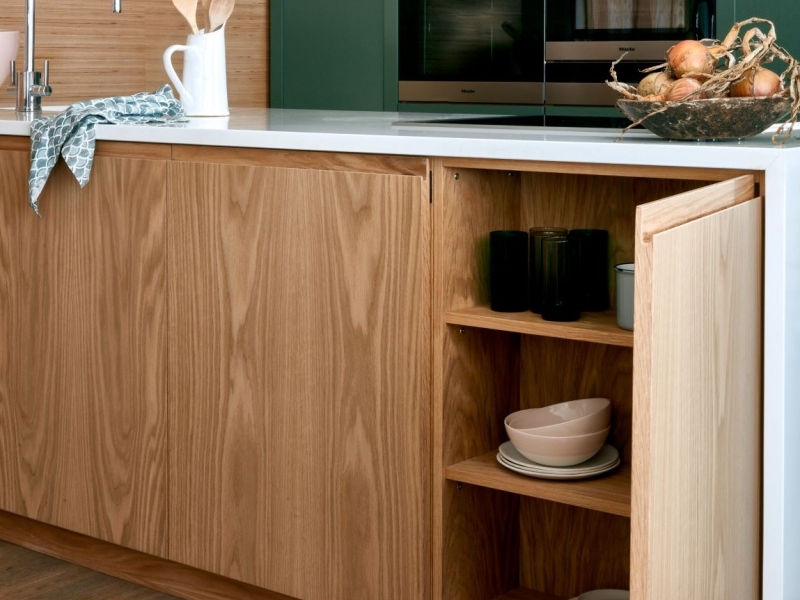
- Book Matching: Adjacent veneer sheets are flipped like pages in a book, creating a symmetrical grain pattern.
- Slip Matching: Veneer sheets are slid across each other, maintaining the same face side. This results in a repeating grain pattern.
- Random Matching: Veneer sheets are arranged randomly, creating a more informal and natural look.
Core Material:
The core material significantly impacts the durability and stability of the cabinet. Opt for high-quality plywood or MDF cores for best results. Plywood is more resistant to moisture, while MDF is smoother and more dimensionally stable.
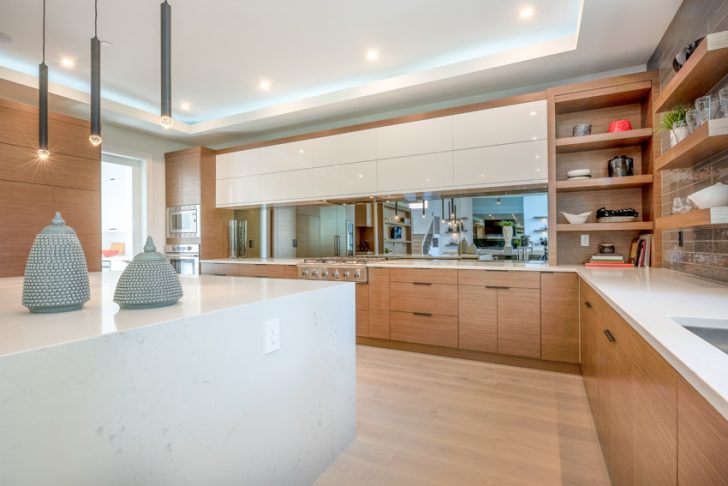
Finish:
The finish protects the veneer and enhances its beauty. Consider factors such as durability, water resistance, and ease of cleaning. Common finishes include:
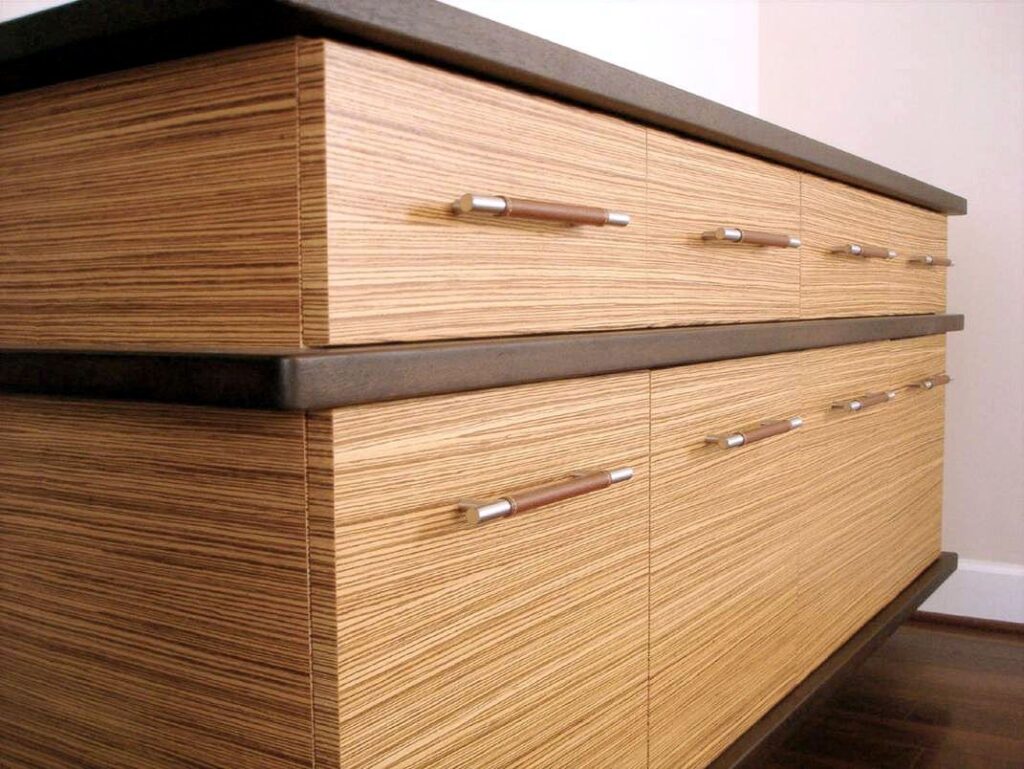
- Lacquer: A durable and water-resistant finish that provides a clear, glossy sheen.
- Varnish: A durable finish that offers good water resistance. Available in various sheens, from matte to glossy.
- Polyurethane: A very durable and water-resistant finish that’s resistant to scratches and stains.
- Oil-Based Finishes: Penetrate the wood and provide a natural look and feel. Require more maintenance than other finishes.
Design Considerations for Wood Veneer Kitchen Cabinets
Wood veneer cabinets offer incredible design flexibility. Here are some ideas to get you started:
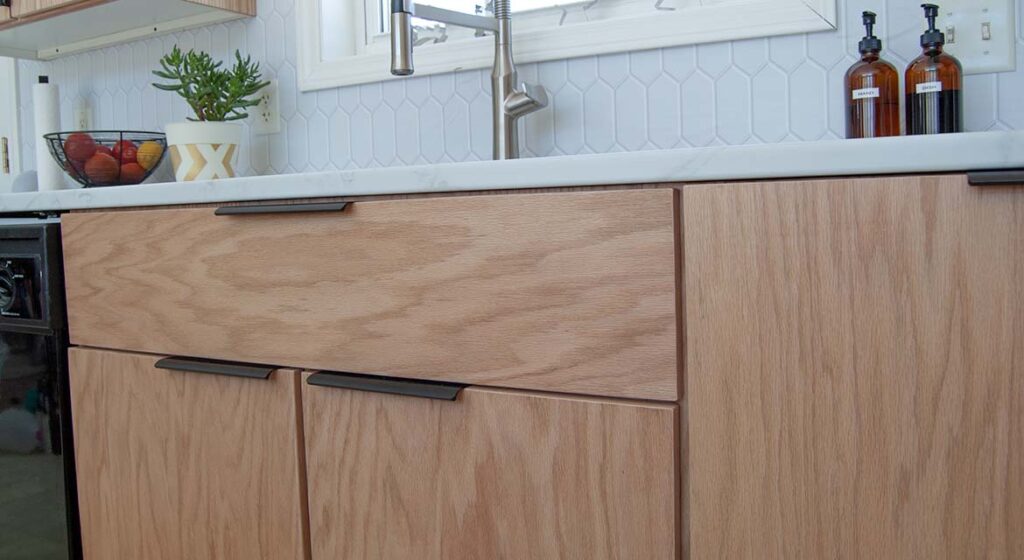
Kitchen Styles:
- Modern: Opt for maple or birch veneer with a slab door style and a clear, matte finish. Pair with minimalist hardware and clean lines.
- Traditional: Choose oak or cherry veneer with a raised panel door style and a warm stain. Add decorative moldings and antique brass hardware.
- Transitional: Blend modern and traditional elements. Consider shaker-style doors in a walnut or painted finish.
- Rustic: Embrace the natural beauty of wood with knotty alder or reclaimed wood veneer. Use distressed finishes and wrought iron hardware.
- Contemporary: Experiment with exotic veneers like zebrawood or wenge. Use high-gloss finishes and sleek, minimalist hardware.
Door Styles:
- Slab Doors: A flat, frameless door style that’s perfect for modern and contemporary kitchens.
- Shaker Doors: A classic door style with a recessed center panel. Versatile enough for a variety of kitchen styles.
- Raised Panel Doors: A more traditional door style with a raised center panel.
- Glass-Front Doors: Add visual interest and display your favorite dishes or glassware.
Hardware:
Hardware is the jewelry of your kitchen cabinets. Choose knobs and pulls that complement the style of your cabinets and the overall kitchen design. Consider finishes such as:

- Brushed Nickel: A versatile finish that works well with a variety of cabinet colors and styles.
- Oil-Rubbed Bronze: Adds a touch of warmth and sophistication.
- Chrome: A sleek and modern finish.
- Antique Brass: Complements traditional and farmhouse-style kitchens.
Color Palette:
The color palette should create a cohesive and inviting atmosphere. Consider the following:
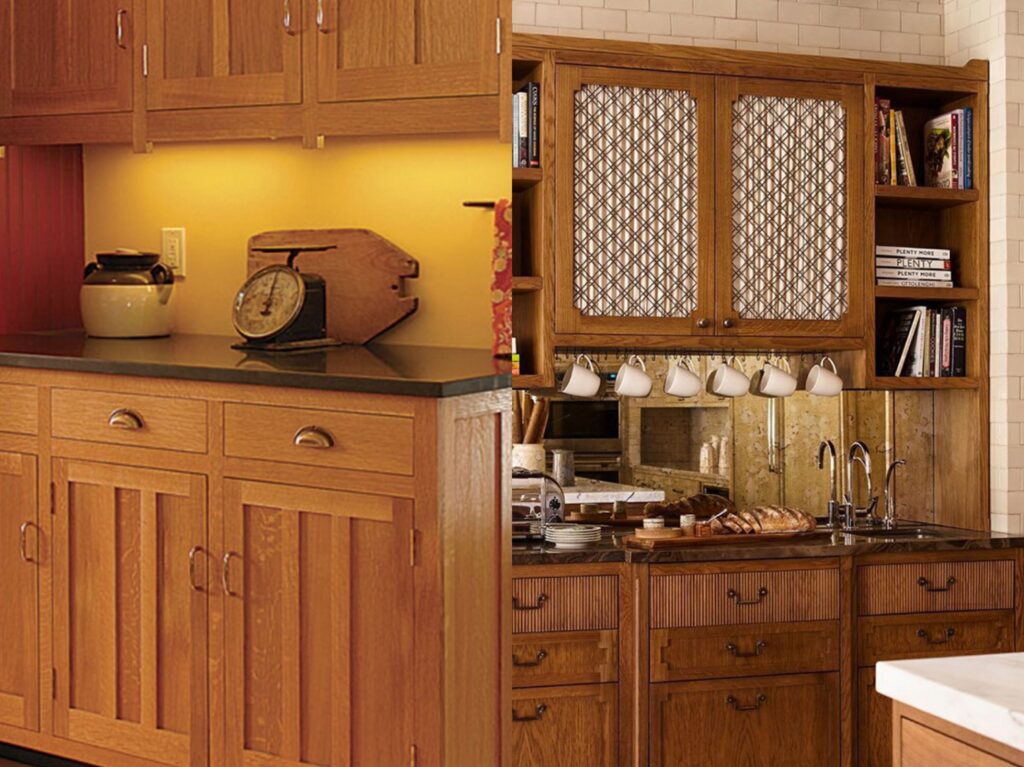
- Cabinet Color: Choose a wood species and finish that complements your flooring, countertops, and appliances.
- Countertop Color: Consider contrasting or complementary colors to create visual interest.
- Backsplash Color: Add a pop of color or texture with a unique backsplash.
- Wall Color: Choose a wall color that complements the cabinets and other elements in the kitchen.
Installation Tips for Wood Veneer Kitchen Cabinets
Proper installation is crucial for the longevity and performance of your wood veneer kitchen cabinets. Here are some tips:
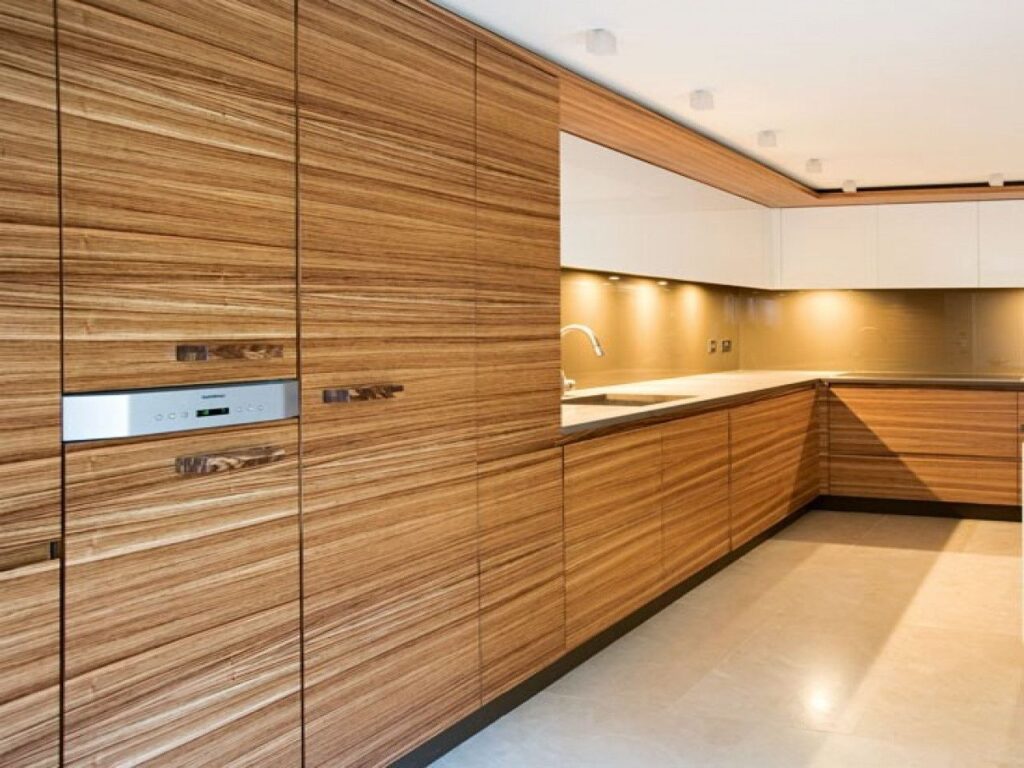
- Hire a Professional: While DIY installation is possible, it’s best to hire a professional installer with experience in working with wood veneer cabinets.
- Ensure Proper Ventilation: Adequate ventilation is essential to prevent moisture buildup and damage to the veneer.
- Seal Exposed Edges: Seal all exposed edges of the veneer with a sealant to prevent moisture penetration.
- Use the Right Fasteners: Use appropriate screws and fasteners to securely attach the cabinets to the walls.
- Level the Cabinets: Ensure that the cabinets are level and plumb to prevent doors from sticking or warping.
- Proper Spacing: Maintain proper spacing between cabinets and appliances to allow for air circulation.
Maintaining Your Wood Veneer Kitchen Cabinets
With proper care and maintenance, your wood veneer kitchen cabinets can last for many years. Here are some tips:
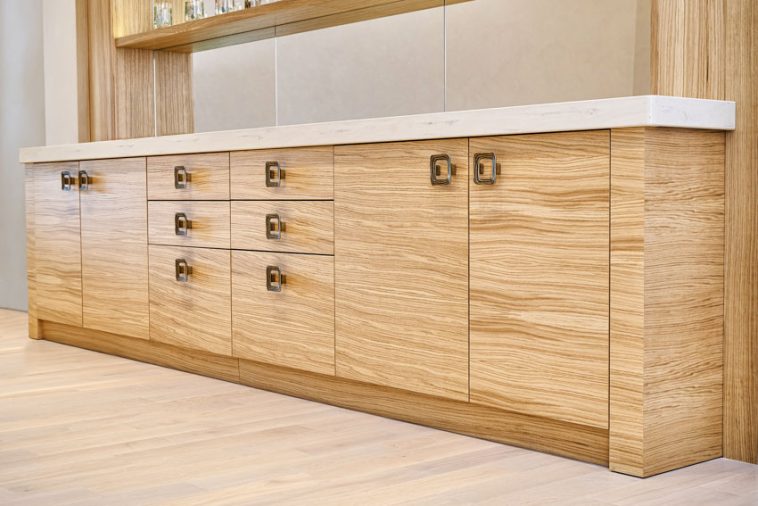
- Regular Cleaning: Wipe down the cabinets regularly with a damp cloth and a mild detergent. Avoid using abrasive cleaners or solvents.
- Avoid Excessive Moisture: Wipe up spills immediately and avoid prolonged exposure to moisture.
- Protect from Heat: Use trivets and hot pads to protect the cabinets from heat damage.
- Touch-Up Scratches: Use wood fillers and touch-up stains to repair minor scratches and dents.
- Check Edge Banding: Inspect the edge banding regularly for any signs of peeling or chipping. Repair or replace as needed.
- Apply Wood Polish: Periodically apply a wood polish to protect the veneer and enhance its beauty.
The Cost of Wood Veneer Kitchen Cabinets
The cost of wood veneer kitchen cabinets varies depending on factors such as the wood species, veneer cut, core material, finish, door style, and hardware. However, in general, wood veneer cabinets are more affordable than solid wood cabinets but more expensive than laminate or thermofoil cabinets.
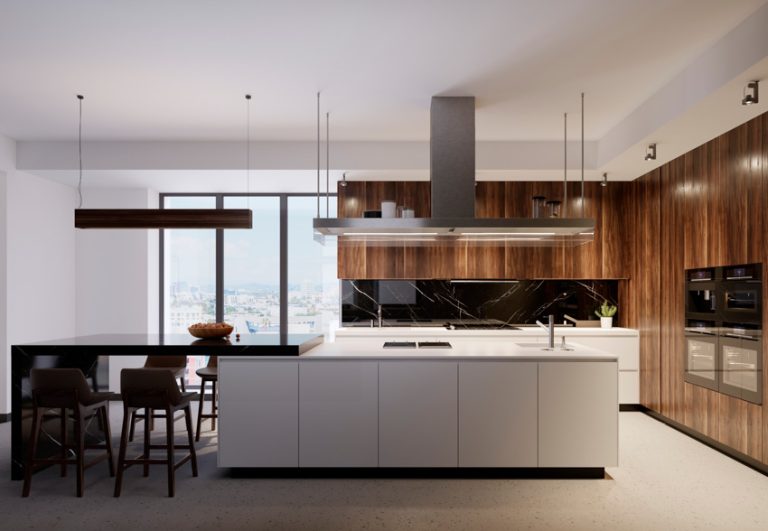
To get an accurate estimate, it’s best to get quotes from several different cabinet manufacturers or retailers. Be sure to specify the wood species, veneer cut, core material, finish, door style, and hardware you want. Also, consider the cost of installation and any additional features you may need, such as pull-out shelves or soft-close hinges.
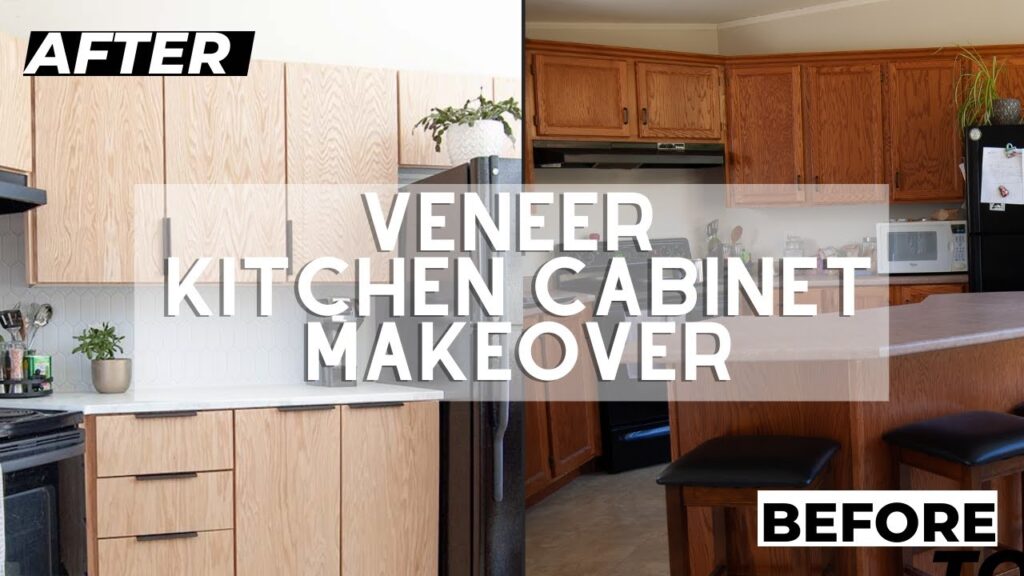
Are Wood Veneer Kitchen Cabinets Right for You?
Choosing kitchen cabinets is a personal decision. Wood veneer cabinets are an excellent option for homeowners who want the look and feel of real wood at a more affordable price point. They offer a great balance of aesthetics, durability, and value. However, it’s important to consider the potential drawbacks, such as susceptibility to moisture and limited refinishing options.
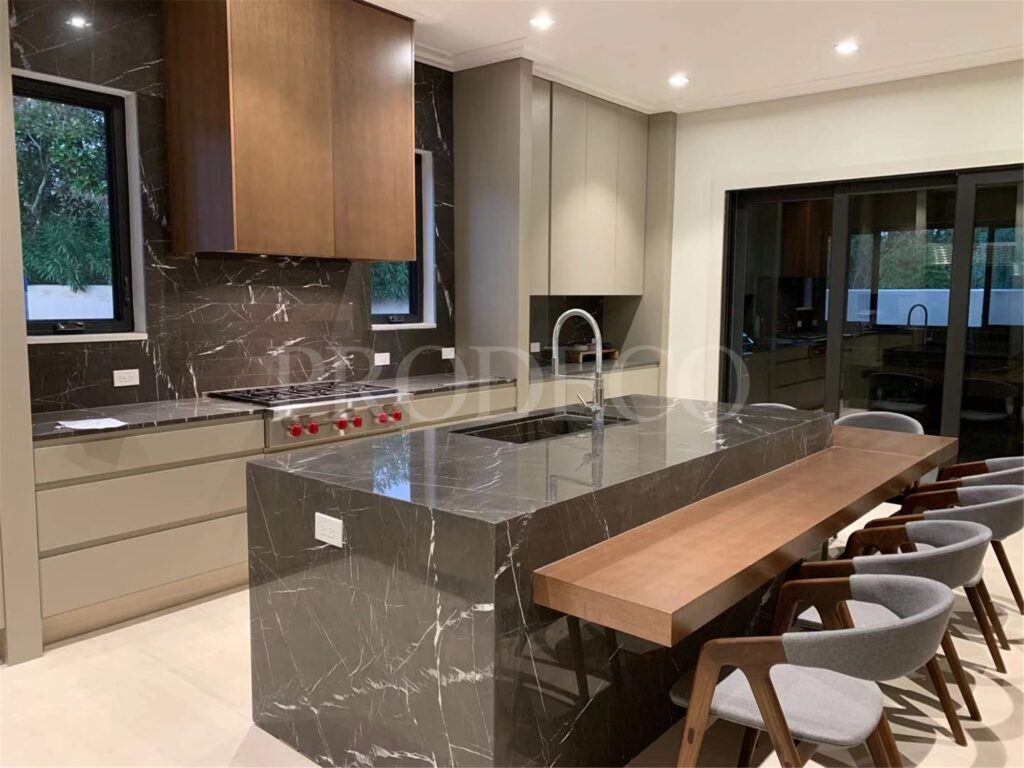
Consider your lifestyle, budget, and design preferences when making your decision. If you’re looking for a cost-effective way to add warmth and elegance to your kitchen, wood veneer cabinets may be the perfect choice for you!
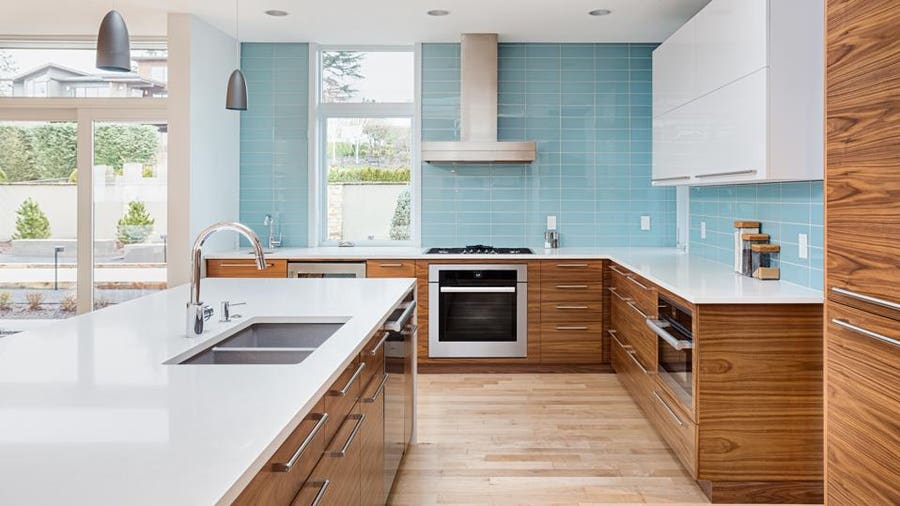
Finding the Right Wood Veneer Cabinet Supplier
The final piece of the puzzle is finding a reputable supplier. Look for companies with a proven track record of quality and customer satisfaction. Ask about their warranty policies and their commitment to sustainable forestry practices.
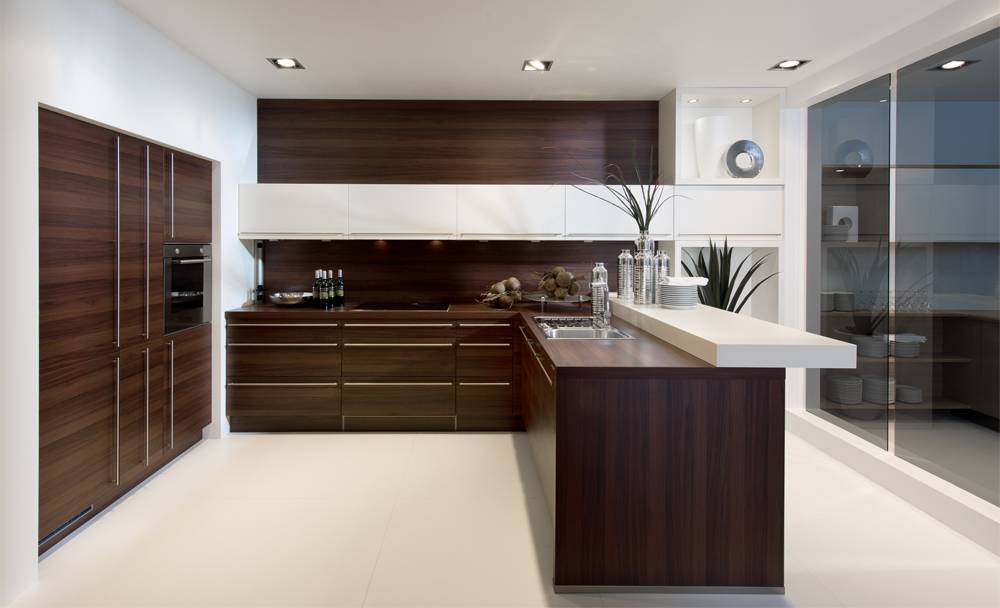
Don’t be afraid to ask questions and request samples. Seeing the veneer in person will help you make a more informed decision. And remember, investing in quality cabinets is an investment in your home’s value and your enjoyment of the space for years to come.
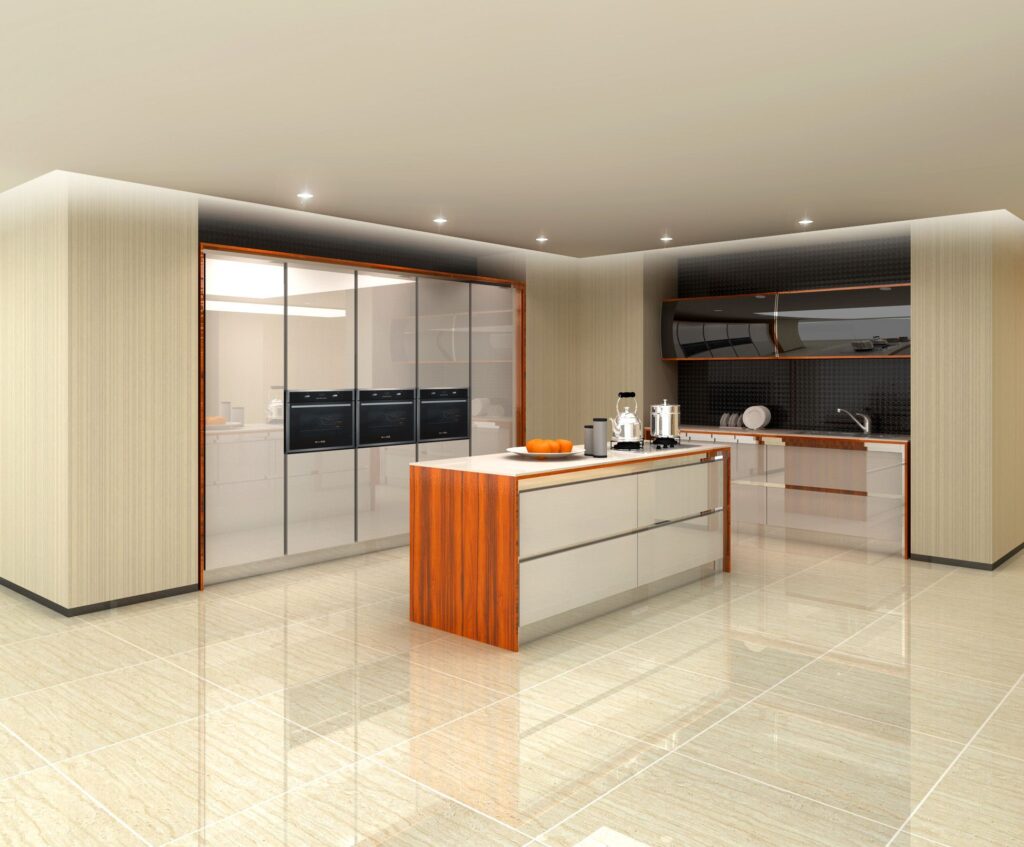
Conclusion: Embrace the Beauty and Value of Wood Veneer
Wood veneer kitchen cabinets offer a compelling combination of beauty, durability, and affordability. They provide a versatile and stylish solution for creating a kitchen that reflects your personal taste and enhances your home’s value. By understanding the pros and cons, considering the design options, and choosing a reputable supplier, you can confidently select wood veneer cabinets that will transform your kitchen into a space you’ll love for years to come.
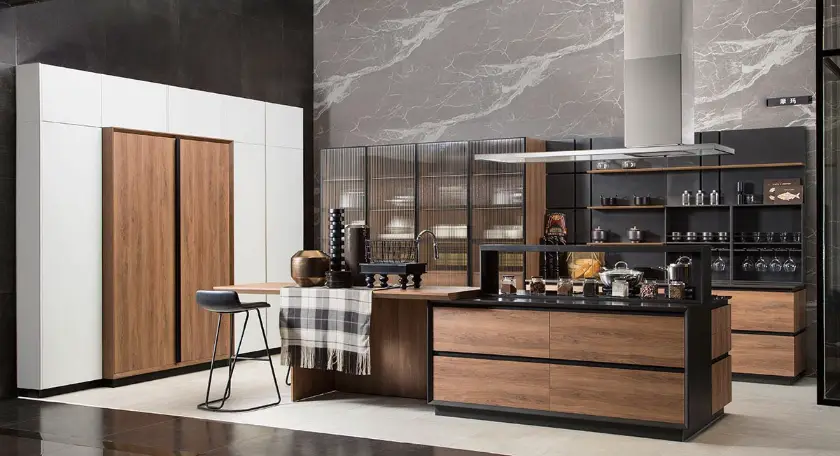
 Nimila
Nimila
